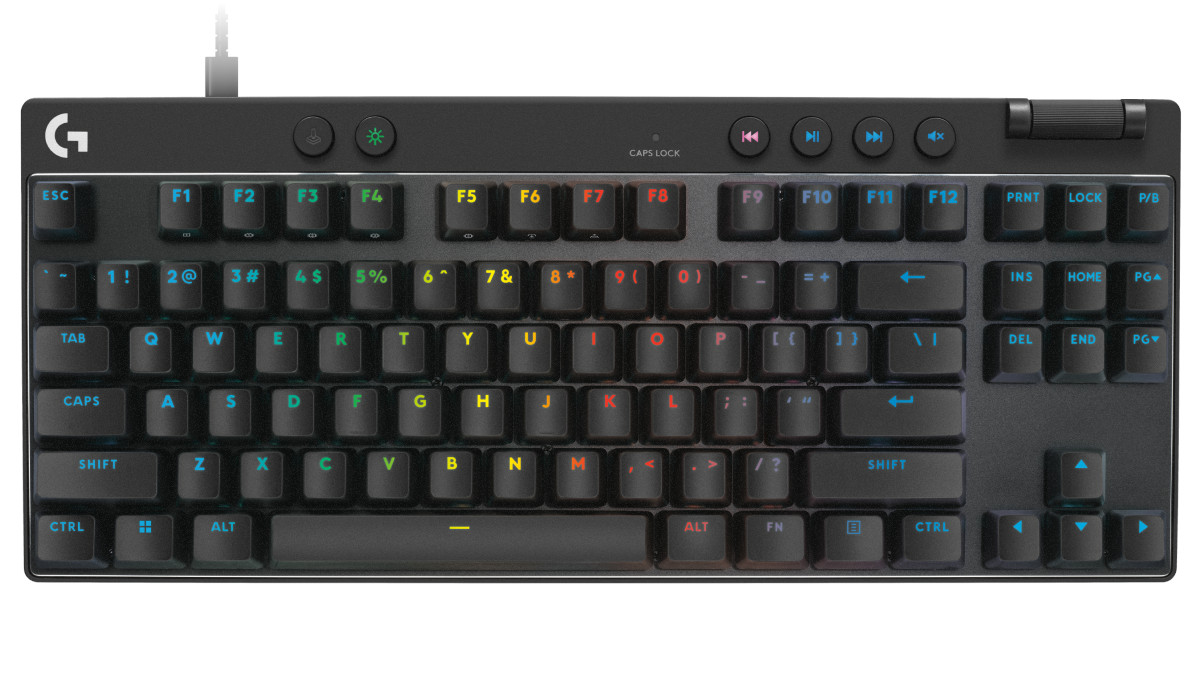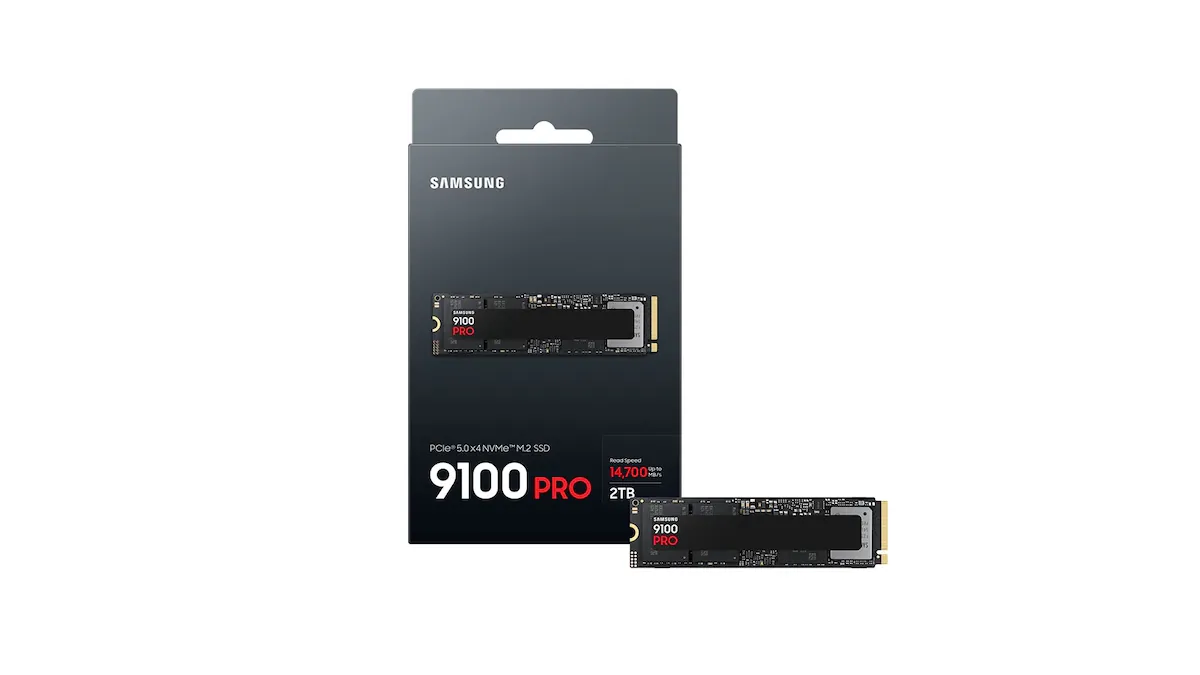The HP Elite Dragonfly Chromebook, a topic that has already received extensive coverage through leaks, announcements, and significant hype, requires little additional explanation.
This device is undeniably a work of art. Boasting impressive speed and featuring enterprise-grade specifications, it proudly stands as one of the pioneering Chromebooks to embrace Intel’s vPro platform. However, it’s worth noting that the truly exceptional nature of its chassis serves to underscore one of my most significant reservations about the current Chromebook landscape more than any other device I’ve assessed this year: ChromeOS. While I have a deep-seated appreciation for ChromeOS and acknowledge the strides it has made over time, I must assert that it’s not yet equipped for the demands of the corporate world. Furthermore, it falls short when it comes to devices that, even in their most budget-friendly configurations, command a price tag well north of $1,000.

The HP Elite Dragonfly Chromebook, priced at $1248.95, exhibits numerous commendable attributes:
- Notably robust and exuding a premium feel.
- Remarkably slim and lightweight.
- Boasts a splendid 3:2 display, complete with 1,000-nit brightness and Sure View Reflect options.
- Delivers outstanding audio through its speakers.
- Offers swift processor options that include the vPro platform.
- Features a sharp webcam with a convenient physical shutter.
Nevertheless, we must also acknowledge certain shortcomings:
- The cost is, frankly, eye-watering.
- The device can tend to generate warmth during extended use.
- The haptic touchpad, while functional, can feel slightly rigid.
- Business-oriented software, given the device’s price point, leaves much to be desired.
- The battery life, while respectable, could certainly see improvement.
- The screen has a tendency to exhibit reflections.
A truly remarkable Chromebook
This Chromebook is truly remarkable, and it’s exactly what Chromebook enthusiasts have eagerly anticipated. Their anticipation has been building for quite a while. In fact, the last premium Chromebook that generated such desire was Google’s Pixelbook back in 2017. HP, in my opinion, has gone above and beyond in creating an exceptional device tailored for enterprise use.
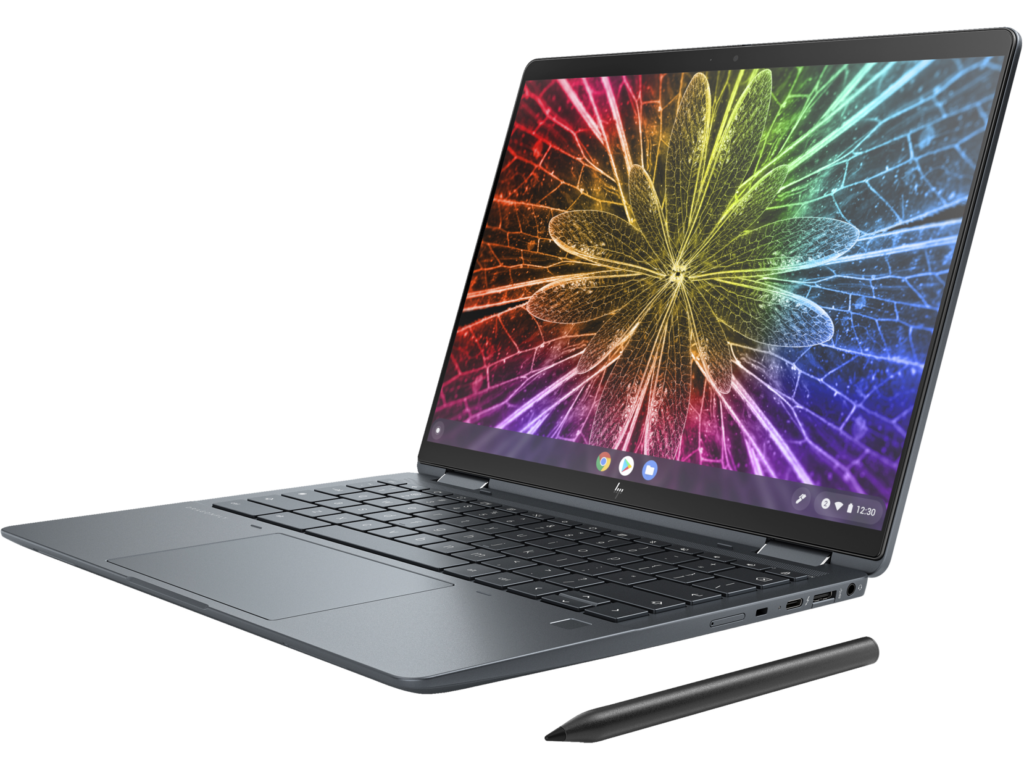
Let me highlight the positive aspects. It’s impressively lightweight, tipping the scales at just 2.8 pounds (only 0.1 pounds heavier than the MacBook Air, albeit slightly thicker). The device boasts a robust magnesium/aluminum hybrid chassis that closely resembles HP’s premium Windows Dragonfly series. The 3:2 display is a standout feature, offering options like a dazzling 1,000-nit brightness and a Sure View Reflect privacy screen. The Bang & Olufsen-tuned speakers deliver exceptional sound quality, and the 5MP webcam, complete with a physical shutter, surprisingly produces sharp images. Additionally, there’s an optional rechargeable USI pen that conveniently attaches magnetically to the chassis.
Even the selection of ports is satisfactory, particularly when compared to the port-deprived world of ultraportables. It includes an HDMI port, along with two USB-C ports and a USB-A port.
Inside my review unit, the Core i5-1245U chip performs admirably. It handles tasks with impressive speed, even breezing through photo editing in the Lightroom app faster than some slower Windows laptops running the desktop version. Switching between tabs and applications is virtually instantaneous. As long as your work requirements align with ChromeOS, this device should handle any workload without significant issues.
While the battery life could be better, it’s certainly not disappointing. I averaged seven hours of continuous usage with a mix of Chrome tabs, Android apps, and PWAs at medium brightness. (Note that I had a QHD model, and the 1920 x 1080 option might yield even better results.) The keyboard and the bottom of the device may feel slightly warm during prolonged use, but it’s far from uncomfortable. Notably, the included adapter efficiently charged the device up to 60 percent in just 54 minutes, making it a relatively fast-charging Chromebook.
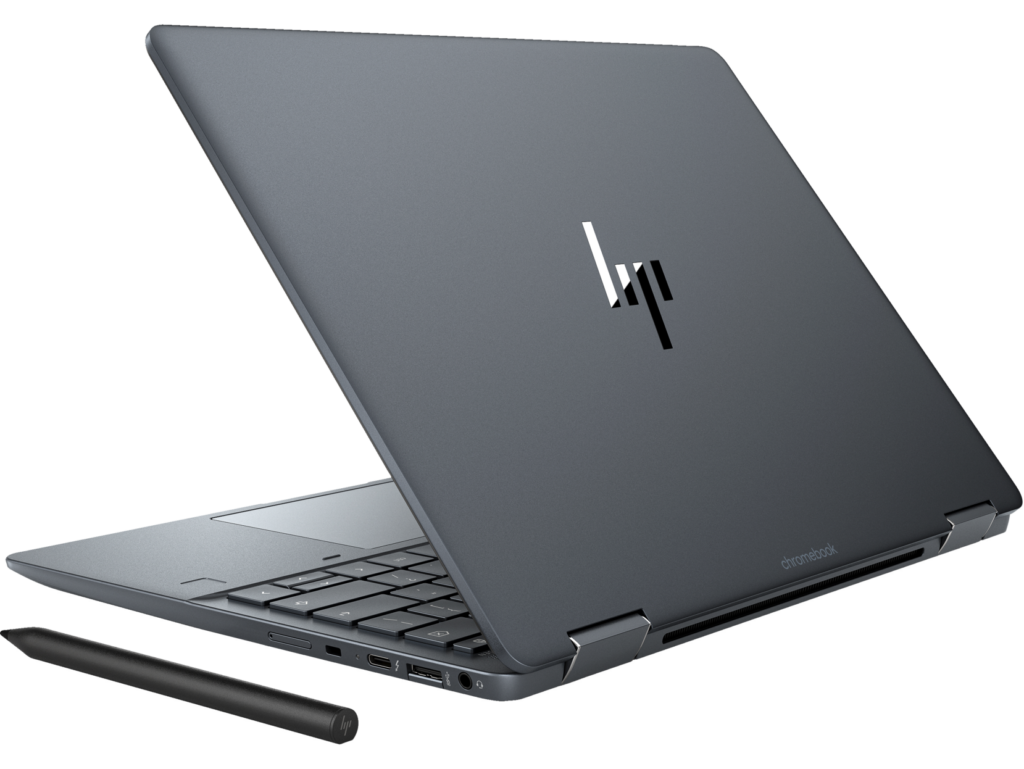
HP Elite Dragonfly Chromebook: specifications
Here are the specifications for the HP Elite Dragonfly Chromebook, as reviewed:
- Processor: Intel Core i5-1245U with vPro
- Display: 13.5-inch LED QHD Plus touchscreen (2256 x 1504) with Corning Gorilla Glass 5, offering 400 nits brightness
- Memory: 8GB RAM
- Storage: 256GB PCIe NVMe SSD
- Ports: One USB-A, two Thunderbolt 4 USB-C, one HDMI 2.0, one microSD reader, one headphone jack, and one lock slot
- Power Adapter: 45-watt USB-C AC adapter
- Audio: Four-speaker sound system with dual microphones
- Input: Backlit keyboard with haptic trackpad
- Camera: 5MP camera
- Connectivity: Intel Wi-Fi 6E AX211, Bluetooth 5.2
- Weight: 2.8 pounds (1.27kg)
On the whole, there’s very little to criticize about this Chromebook when you examine its specifications. The only minor issue I encountered was the screen’s slight reflectiveness, which prompted occasional adjustments to brightness when working near our office window (a minor inconvenience). It’s an enjoyable device that delivers a satisfying user experience.
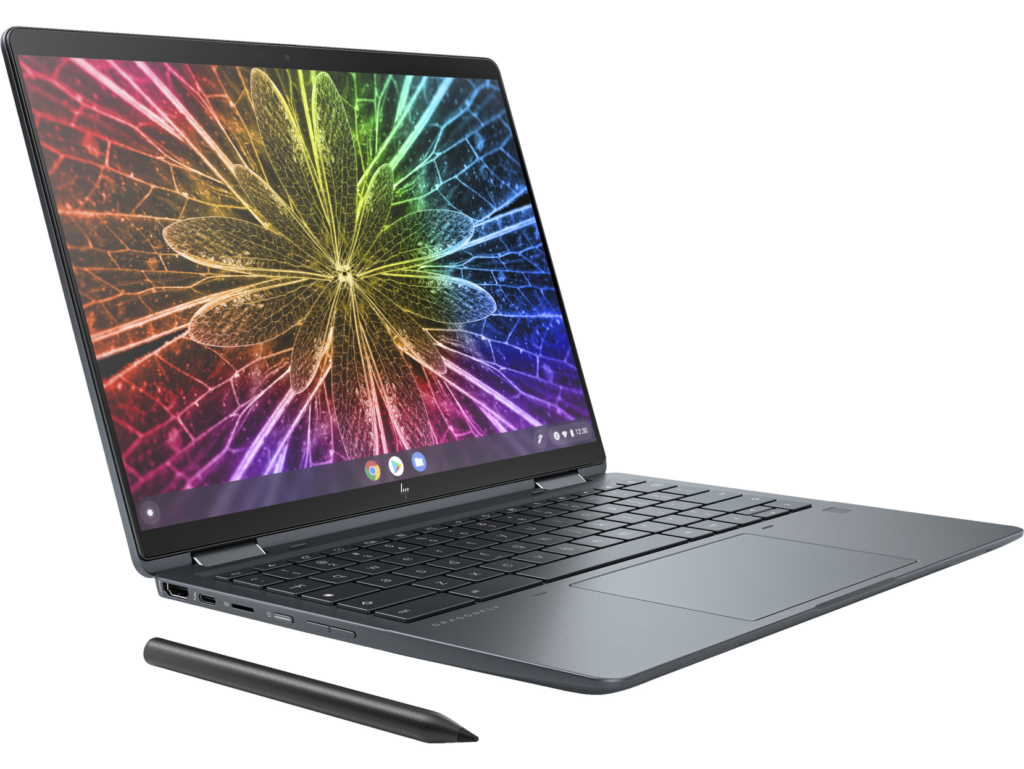
Nevertheless…
Dragonfly Chromebook User Experience
First and foremost, it’s crucial to clarify that the criticisms I’m about to voice aren’t directed at HP. This review isn’t intended to cast a wide blame net on the product’s manufacturer. The creation of the user experience for the HP Elite Dragonfly involves the collaborative efforts of multiple companies, as is typically the case with any gadget. My purpose here is simply to provide a candid description of that user experience.
Let’s delve into the heart of the matter: the Elite Dragonfly Chromebook excels in leisure but poses challenges in a professional context.

To be clear, I acknowledge the existence of power users who seek high-powered Chromebooks for activities such as coding, virtualization, and gaming. I’m aware that this group eagerly anticipates such releases, and I’m confident that they’ll find satisfaction in this device—it lives up to its promises. However, I must point out that comparable power can be found in more budget-friendly alternatives. The Acer Chromebook Spin 714, for instance, offers nearly identical processing power as my review unit at a mere $729, less than half the price, and well over $400 cheaper than the least expensive Dragonfly Chromebook. While the Dragonfly does exhibit more power than the Spin 714, the extent of that difference is debatable.
For the mainstream business user, historically the target audience of the Dragonfly line to which this laptop belongs, I question whether the Dragonfly Chromebook justifies its price tag.
HP Elite Dragonfly Chromebook: Slack Woes
A significant portion of my work life revolves around Slack. While this may not hold true for every workplace, it is a reality for a considerable number of them. ChromeOS users face a dilemma: using Slack in the browser (a route that many Windows users avoid due to the convenience offered by the desktop app) or resorting to the Android app (which, frankly, falls short).
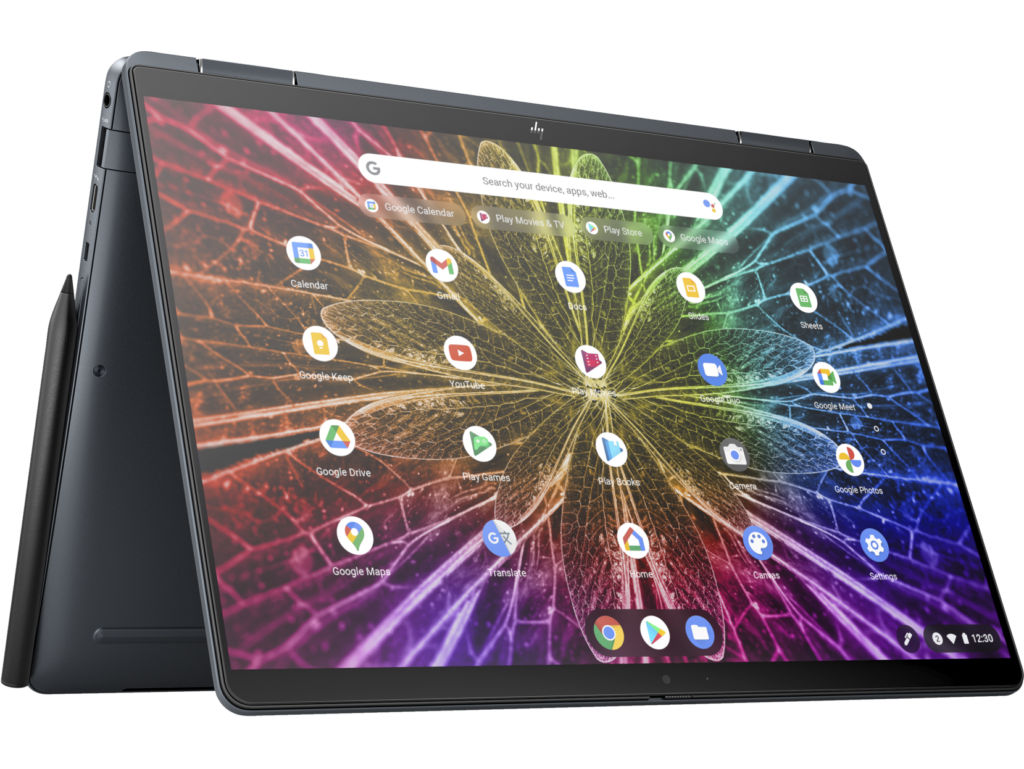
Here’s a selection of grievances I have concerning the current Slack app on Chromebooks:
- Message delays occasionally occur, leading to notifications without corresponding messages.
- The Android app for Slack on ChromeOS doesn’t seem to integrate well with other versions. Using the desktop or iOS apps one day and switching to the Chromebook the next often results in a flood of notifications from the previous day, which have already been addressed.
- The text input box inexplicably closes while I’m in the middle of typing a message, obscuring what I am composing.
- Background refresh behaves unpredictably, sometimes delaying the display of received messages.
- Links fail to unfurl and display previews, unlike the desktop version.
- Status updates are sluggish, requiring several seconds to reflect who’s online and who isn’t.
- The app occasionally fails to bring unread channels to the top, necessitating navigation through lists at the bottom.
- Text occasionally overlays other text, giving the app an unfinished appearance.
- Responsiveness issues persist, requiring multiple clicks to open channels, and the app occasionally freezes during testing.
I’m not alone in longing for a better non-browser option for Slack, as evidenced by numerous complaints in the Google Play Store regarding the Android app’s bugginess. These may seem like minor issues, but for individuals who rely on Slack throughout their workday (and there are many), they quickly become a source of frustration.
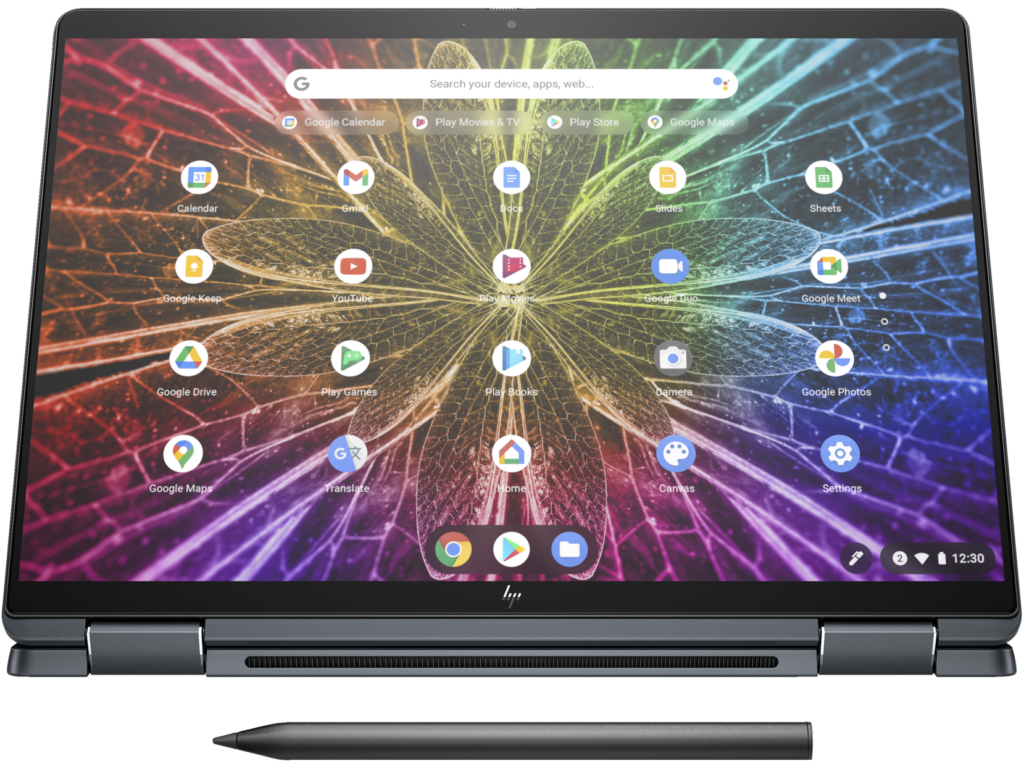
HP Elite Dragonfly App Challenges
While Slack may be the most pressing issue that requires immediate attention before recommending any Chromebook for serious enterprise use, I encountered a host of other challenges with various apps during my workday. Discord, for instance, offers a more feature-rich desktop version for Windows, but on ChromeOS, the Discord Android app proved problematic. Clicking on anything within the app was futile, leading to frequent crashes. Discord, though not as critical as Slack, holds significance in many individuals’ work and social lives.
The issues extend beyond Discord; I encountered a multitude of random bugs in other Android apps I attempted to use. Messenger suffered from significant delays in loading new messages and online statuses, sometimes launching as a blank white screen and occasionally freezing, albeit no longer crashing the entire Chromebook as it has in the past. Running Geekbench was an exercise in frustration as the app repeatedly crashed before completing a single run. The Zoom Android app also crashed multiple times during calls, despite the presence of a Zoom PWA in the app store, which, unfortunately, is easily confused with the Android app. Moreover, there were recurrent problems with slow boot times, sluggish load times, and the need for multiple clicks to open apps.
While ChromeOS and the Dragonfly itself demonstrate impressive speed, the apps—some of which are essential for business users—fall short of their Windows desktop counterparts. Additionally, certain programs relied upon by business users are only available in their web versions on ChromeOS, including Microsoft Office, which lacks several features found in desktop programs.
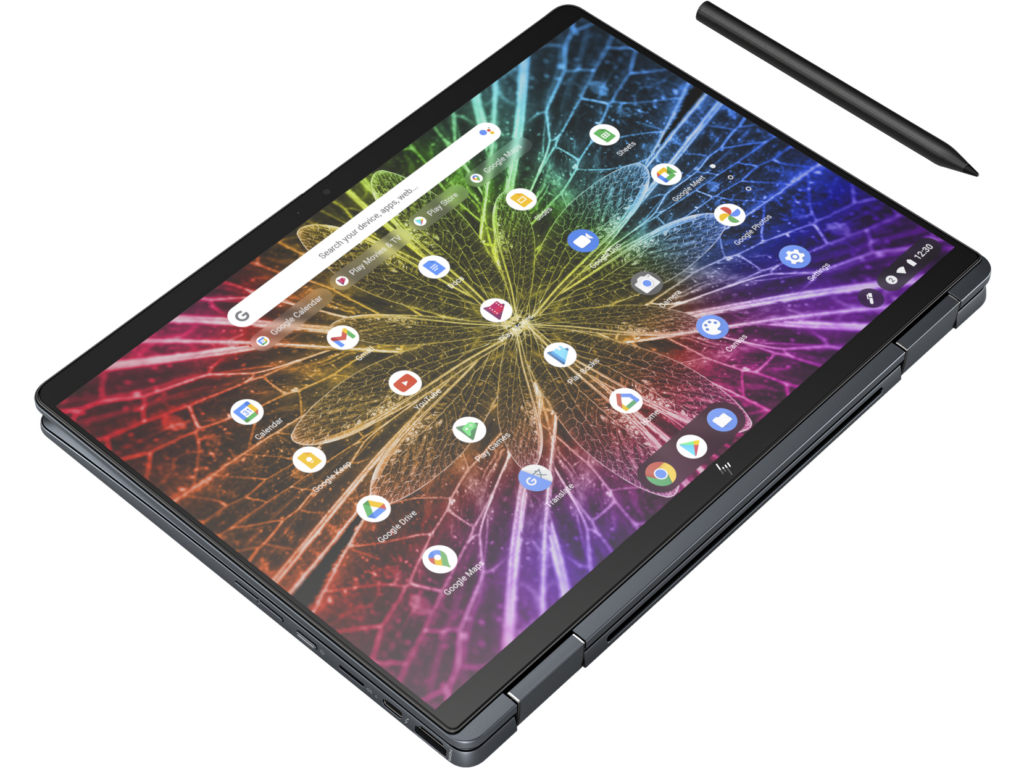
In Conclusion
In conclusion, the HP Elite Dragonfly Chromebook has its merits but also faces notable challenges, particularly in a professional context. While it excels in leisure activities, the app ecosystem and user experience leave much to be desired for work-related tasks. Despite its appeal to power users, the price may not be justified when comparable alternatives are available at a significantly lower cost. For mainstream business users, the Dragonfly Chromebook’s value proposition may fall short, and the hurdles posed by app limitations and performance issues cannot be overlooked.
Entry-level price for the Elite Dragonfly Chromebook
The entry-level price for the Elite Dragonfly Chromebook starts at $1,149, and as some may point out, there are ways to work around its limitations. One option is Parallels Desktop, allowing Windows to run in a virtual machine on Chromebooks. The Dragonfly even includes a year-long free trial with the Chrome Enterprise upgrade. However, beyond the trial period, business customers must pay $69.99 per user, per year to continue using it, which adds to the cost. Linux is another option, but in the context of businesses deploying numerous units to time-strapped employees, ChromeOS remains the practical choice.
ChromeOS
To reiterate, I am a ChromeOS enthusiast. Its speed and security are commendable. Sacrificing some non-browser software capabilities is reasonable for a leisure device used for entertainment. However, my endorsement wavers when we consider a device crucial for livelihoods.
And then there’s the matter of pricing. The most affordable preconfigured Elite Dragonfly Chromebook starts at $1,149, reaching up to $1,799. Customizable units introduce another layer of complexity. For instance, the cheapest configuration I can currently create costs $1,961 and won’t ship until March of next year, according to HP’s website.
My unit, featuring a vPro Core i5, 8GB of RAM, LTE, and 256GB of storage with the stylus included, is not available as a prebuilt option. However, a comparable model with 128GB of storage is listed for $1,579.99. It’s worth noting that this specific configuration can only be obtained as a customizable unit, starting at a minimum of $2,408. We are now entering MacBook pricing territory, and with that, the expectation is for a more seamless app experience. (While it’s not an exact comparison, for reference, a similarly specced M2 MacBook Air would be $1,219.)
It’s true that we’ve seen Core i3 versions of this device dip below $1,000 at times, which could change the equation if available. However, as of now, this isn’t the listed price for any units.
This device is undeniably stunning, a testament to HP’s craftsmanship—it’s the most visually appealing Chromebook I’ve had the pleasure of using.
HP Elite Dragonfly Chromebook desktop software
However, the desktop software offered by ChromeOS doesn’t match the elegance or cost of this device. While some of my grievances may appear nitpicky, these are software issues that business users contend with daily, often at a premium price. It’s possible that Google, having canceled its next high-end Pixelbook product, is also arriving at a similar realization.
I acknowledge that improvements are in the pipeline. Progressive Web Apps (PWAs) are gaining traction, Linux is becoming more user-friendly, and Android apps on ChromeOS have come a long way since my initial reviews. This operating system is undeniably enjoyable to use. Yet, it hasn’t quite reached the readiness level required for executive-level use.
HP Elite Dragonfly Chromebook Accessibility
Key Dimensions and Features:
- Letter keys measure 0.6 x 0.6 inches, with a 0.06-inch gap between them.
- The keyboard is backlit for enhanced visibility.
- The power button, sized at 0.5 x .125 inches, includes an indicator light.
- Volume keys measure 0.6 x 0.375 inches.
- Keys are dark blue with white text and require minimal pressure for activation.
Display and Audio:
- The screen offers configurations up to 4K resolution and features touchscreen capabilities.
- It delivers a brightness of 400 nits.
- Speaker performance averages at 80 decibels during testing.
Functionality and Portability:
- The laptop can be opened with one hand, albeit with some effort.
- It boasts a 360-degree rotation capability.
- The touchpad, measuring 4.75 x 3.125 inches, demands deliberate force for activation.
Security and Logins:
- Fingerprint logins are supported, while facial logins are not available.
ChromeOS Accessibility Features:
- ChromeOS incorporates an integrated screen reader known as ChromeVox.
- Dictation functionality is accessible through Settings.
- High-contrast mode activation involves Ctrl + Search + H.
- Captions are displayed at the bottom center of the screen, with adjustable attributes such as size, font, color, opacity, shadow, background color, and background opacity.
- Remapping options are provided for keys like Search, Ctrl, Alt, Escape, Backspace, Assistant, and Caps Lock. The top row can also be repurposed as function keys.
- Toggling features include sticky keys, an onscreen keyboard, object highlighting with keyboard focus, text caret highlighting upon appearance or movement, page navigation with the text cursor, and switch access.
- Cursor settings are customizable, encompassing color, size, speed, click strength, and haptic feedback. Additionally, options like mouse acceleration, reverse scrolling, tap dragging, tap-to-click, touchpad acceleration, and automatic click can be enabled or disabled.
- ChromeOS incorporates a Snap Layout feature, accessible by pressing and holding the Maximize button on an open window.
Discover more from NewForTech
Subscribe to get the latest posts sent to your email.


